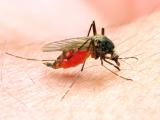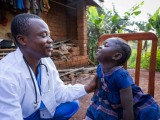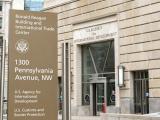Sep 14, 2011
Cantaloupe Listeria outbreak spreads to fifth state
An Indiana resident has been sickened in a multistate Listeria monocytogenes outbreak linked to Colorado-grown cantaloupe, raising the number of cases to 16 and the number of affected states to five, the US Centers for Disease Control and Prevention (CDC) said in an update yesterday. One death has been linked to the outbreak, and New Mexico health officials said on Sep 12 that they have nine Listeria infections, including three deaths, that might also be tied to the outbreak. The CDC has warned people at risk for listeriosis complications, such as people with underlying health conditions and pregnant women, not to eat cantaloupe from Colorado's Rocky Ford region, which are harvested this time of year and distributed nationally. Investigators with the Colorado Department of Public Health and Environment have found Listeria on cantaloupe collected from grocery stores and from a sample collected from a patient's home. The Food and Drug Administration (FDA) announced yesterday that its investigators are working with state health partners to determine where contamination likely took place in the supply chain and where the products were distributed.
Sep 13 FDA statement
Some victims of 2001 anthrax attacks still have symptoms
Nearly 10 years after the anthrax letter attacks of 2001, some of those who were sickened are still experiencing symptoms, a federal researcher told the Bucks County Courier Times, a suburban Philadelphia newspaper. The story said the National Institute of Allergy and Infectious Diseases (NIAID) has been monitoring the health of seven survivors of the attacks, which sickened 22 people and killed 5. Dr. Mary Wright, principal investigator for the NIAID study, said two of the seven had inhalational anthrax, and all but one are regularly tested. A 1-year follow-up study of 15 survivors by the CDC, released in 2004, found that 8 of the survivors didn't return to work for more than a year after the attacks, all were under psychiatric care, and most had symptoms such as chronic cough, memory problems, fatigue, depression, anxiety, and hostility, the story said. Wright said the survivors who were sickest in 2001 are still having problems, including memory trouble and chronic fatigue. Those survivors either had inhalational anthrax or had the pathogen in their bloodstream after contracting a cutaneous infection, she reported.
Sep 11 Courier Times story
WHO European region considers ambitious new TB measures
The World Health Organization (WHO) Regional Committee for Europe, meeting in Baku, Azerbaijan, this week, is expected to endorse an aggressive new plan to fight multidrug- and extensively drug-resistant tuberculosis (M/XDR-TB), the WHO said today. Zsuzsanna Jakab, WHO regional director, said in a statement that the TB is evolving with a vengeance in European countries and that the plan combines evidence-based tools with technical assistance from member states. TB is spreading at an alarming rate in Europe, but with different profiles in different countries. Outside the western part of the region cases grew sixfold between 2008 and 2009. Though the pace of new cases hasn't been quite as brisk in western Europe, the treatment success rate in some of those countries is less than half that of countries in eastern Europe and central Asia. The plan includes new diagnostic techniques, patient-centered care models, and services tailored to certain populations. It includes specifics about budgets, targets, and timelines and addresses topics such as the need for more effective drugs, vaccines, and testing. The WHO predicts that implementing the plan could prevent 250,000 new MDR-TB cases and 13,000 XDR-TB cases. It also projected that the interventions will interrupt MDR-TB transmission, saving 120,000 lives and $5 billion.
Sep 14 WHO statement
Report: Global malaria deaths down 38%
Global malaria deaths have dropped an estimated 38% in the past decade, and 43 countries have seen malaria cases or deaths fall by 50% or more, according to a report by Roll Back Malaria (RBM), a global partnership of more than 500 public and private organizations. The group translates that decline into 1.1 million lives saved among children under 5 in sub-Saharan Africa. With about $5 billion invested over the past 10 year, health workers have been able to increase coverage of all malaria interventions and preventive steps, according to an RBM press release. For example, enough bed nets have been distributed to cover nearly 80% of the at-risk population in sub-Saharan Africa. Over 90% of malaria deaths occur in Africa, the group said, costing the continent $12 billion each year in lost productivity. The report noted that 11 of the 43 nations that have cut cases or deaths by 50% or more are in Africa. In addition, international funding has grown 15-fold, from $100 million in 2003 to $1.5 billion in 2010. RBM Executive Director Awa Marie Coll-Seck said, "A key factor in our success has been effective partnership involving donor countries, the private sector, civil society, and UN organizations, with African countries taking a key leadership role."
Sep 12 RBM press release
Sep 12 report


















